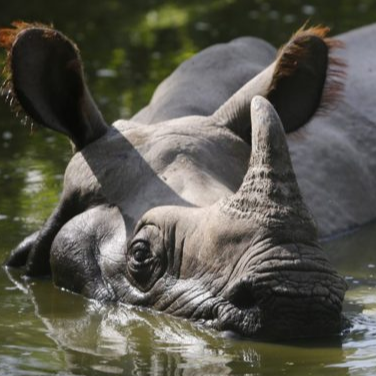


Kaziranga National
Park, home to the largest population of Greater one-horned rhinos (Rhinoceros unicornis)
in the world, sits on the southern banks of the mighty Brahmaputra River, which
runs through Assam. In mid-July, a month after the first rains fell in Assam
this year, the river burst its banks, inundating land on either side of its
vast width. At the flood’s peak, as much as 95% of Kaziranga was underwater (up
to a depth of 4.5 m), causing massive disturbance to the wildlife that calls
the park home.
Authorites in Kaziranga have confirmed
that six rhinos have been killed in the floods so far. They also said that four
carcasses have been recovered from the park’s Central forest range and western
and burapahar forest range on Thursday, while two had died earlier.
According to the Kaziranga National
Park authority, four rhinos died by drowning in floodwaters while one rhino
died naturally during the flood.
The
danger during the floods is that if the poachers come to know about the death
of a rhino ahead of the forest department, there is a fair chance that the horn
would fall into the wrong hands. On Tuesday, as this writer was sitting in a
forest department office at Bagori, an alert came that an adult rhino was found
dead. In no time, ranger Pankaj Bora took a speed boat and recovered the horn
of the dead animal.
Locals,
however, claimed the rhino could have been rescued had the forest officials
acted promptly. "It was sad to see the rhino struggle to come out of the
mud. We were moved by its desperation. So, some of us nudged it and tried to
help it stand on its feet. But we could not succeed," said a local.
However, whilst the
floods are a natural, annual occurrence in Assam, their impacts on rhinos and
wildlife can be exacerbated by human development. As roads, shops, restaurants
and hotels have been built around Kaziranga, this has impacted the movement of
wildlife, blocking their passage to higher land, where they would naturally
retreat during floods. To try and redress the balance, conservationists in the
Park have constructed artificial highlands to act as refuges for animals
fleeing the rising waters. Some of the Park’s rhinos have been seen using these
highlands, showing their importance as an alternative to natural refuge areas.

To volunteer for small initiative in protecting mother earth please participate here.
Thank You !